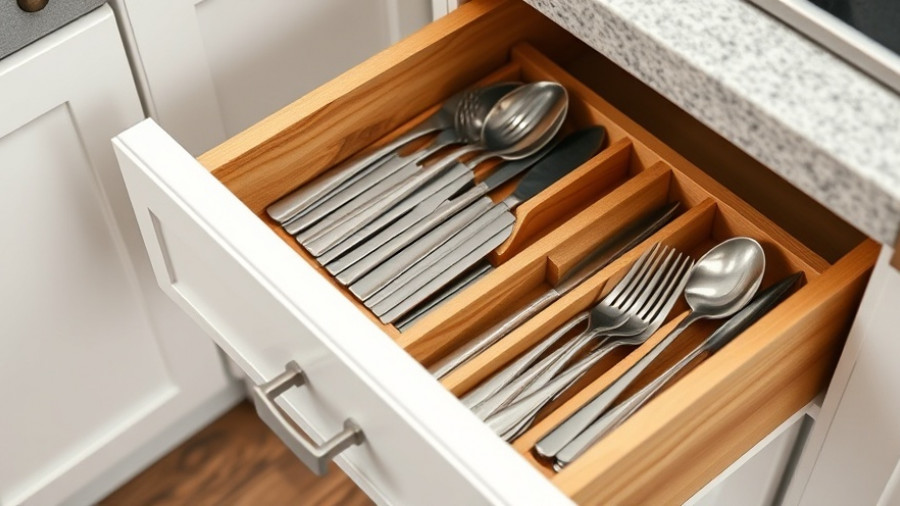
How to Stay Ahead This Hurricane Season: Preparation Strategies
As hurricane season commences, homeowners must take proactive measures to safeguard their homes and families. While it may seem daunting, being prepared for a storm doesn't have to be overwhelming. By implementing a few thoughtful strategies, you can significantly reduce risks and navigate the challenges that come your way more efficiently.
Make Technology Your Best Friend
Downloading a trusted weather app can be a game changer in preparation efforts. Apps such as the National Oceanic and Atmospheric Administration (NOAA) Live Weather Radar provide up-to-the-minute updates on hurricane activities and weather conditions. Your device becomes an essential lifeline for information during unpredictable weather events, allowing you to make quick decisions about your safety based on current data.
Additionally, don't underestimate the power of social media and local news apps that can keep you abreast of the latest emergency alerts and advisories from local authorities. Following the right channels can make all the difference when it comes to implementing timely actions—whether that means evacuating or sheltering in place.
Safeguarding Your Home Against the Elements
No home is completely hurricane-proof, but securing your property can drastically mitigate damage. If you haven’t installed permanent hurricane shutters, now is the time to acquire plywood and hardware for temporary boarding. Check state regulations for shutter installation, which may help you avoid fines.
Moreover, maintaining your landscape proves vital. Trees should be assessed for stability, and branches close to your home must be trimmed. Clearing your yard of any items that could become projectiles in high winds, like patio furniture, can also reduce potential hazards. Taking these steps not only protects your home but also eases the burden on emergency responders during chaos.
The Lifesaver: An Emergency Kit
Every household should have an emergency kit that contains crucial supplies. Refresh yours annually to include fresh water, non-perishable food, a first aid kit, flashlights with batteries, cell phone chargers, and necessary personal items. Resources like Ready.gov offer checklists to streamline building your kit.
If your area frequently loses power during storms, consider keeping a high-quality cooler with ice packs to store perishables. Make it a family project to restock and check this kit every season—this act not only prepares you for natural disasters but also fosters a sense of community solidarity.
Powering through Outages: Backup Solutions
Power outages are a common aftermath of hurricanes, and having a reliable backup power solution is indispensable. The Anker SOLIX F3000 Portable Power Station is an excellent option, featuring rapid recharging and compatibility with both AC and solar power sources. With a capacity of 3,072Wh, it keeps essential appliances running, such as refrigerators and medical devices, during prolonged outages.
By investing in a backup power supply, not only do you secure your power needs, but you also provide peace of mind for your family. This resource could make all the difference in ensuring your comfort and safety during a storm.
Community Awareness and Building Connections
While personal preparedness is essential, community awareness plays a crucial role in whether families can weather storms safely. Connect with neighbors to discuss collective preparedness measures or consider joining local community groups focused on disaster preparedness. Utilizing local resources can enhance your support system.
Engaging with your community also leads to opportunities for collaborative efforts such as neighborhood watch programs or workshops on emergency preparation. Sharing knowledge-and resources can empower others while fortifying the resilience of your area as a whole.
Making the Most of Local Expertise
Don’t hesitate to reach out to local professionals or emergency management agencies for advice tailored to your local landscape. Understanding the specific risks posed by hurricanes in your region—such as localized flooding or wind patterns—can help you make more informed decisions when preparing.
In tumultuous times, having access to expert advice can save lives and possessions. Engage with your local emergency services and keep their contact information readily accessible; they can provide real-time information on evacuations, shelters, and safety protocols.
Final Thoughts: Empower Yourself and Your Community
Preparation isn’t just about fortifying your home; it’s about building resilience within your community. Share these strategies with neighbors to ensure everyone is covered this hurricane season. The more proactive we are as individuals and as a community, the better prepared we will be to face whatever nature may throw our way.
Now is a crucial time to take action—don’t wait for the storm to start your preparations. Address these recommendations to foster a sense of security and awareness in your home and community.
 Add Row
Add Row  Add
Add 




Write A Comment